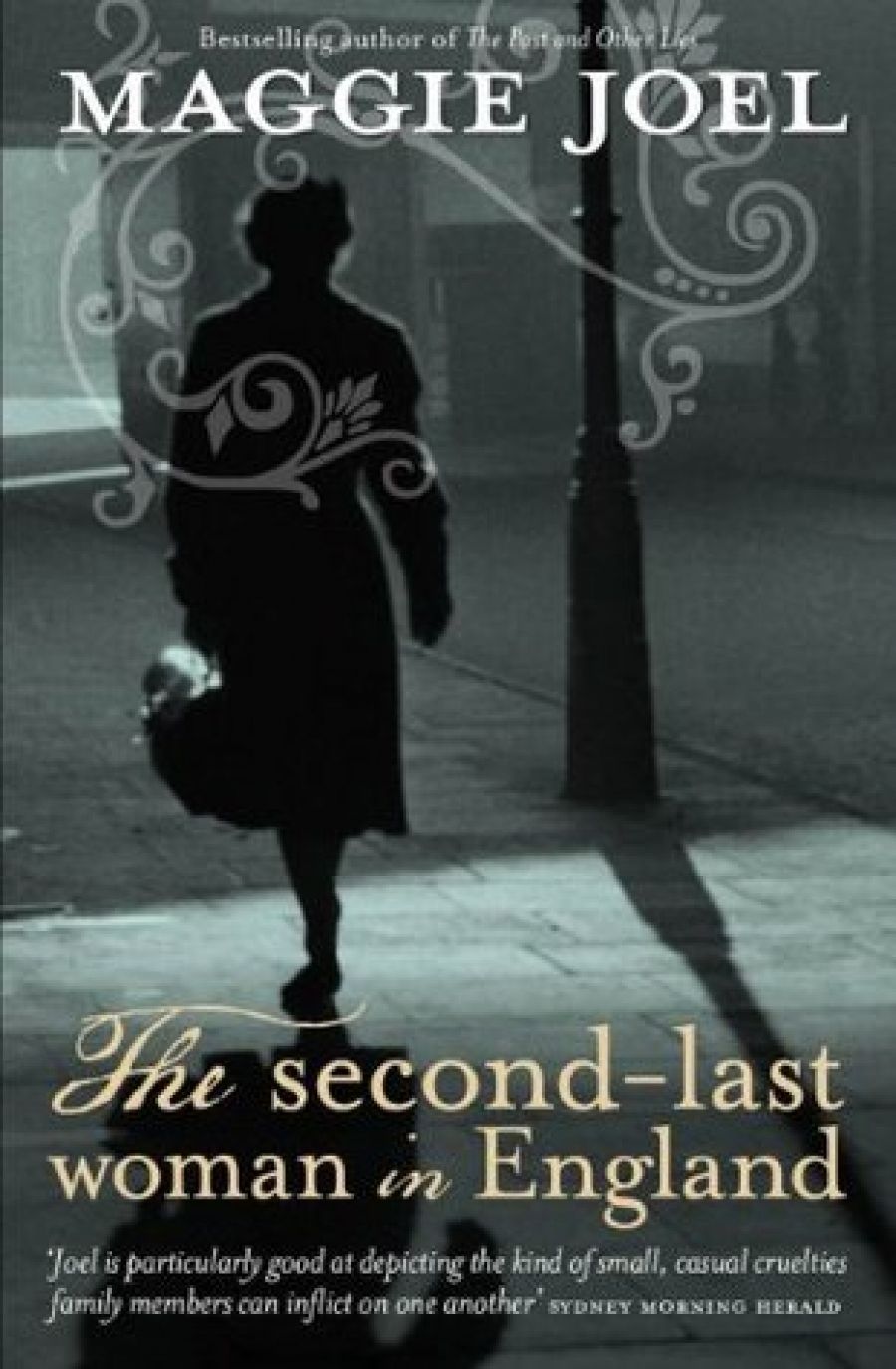
- Free Article: No
- Contents Category: Fiction
- Review Article: Yes
- Online Only: No
- Custom Highlight Text:
There are a number of strands at play in this curiously titled novel set in postwar London in the Coronation year, 1953. The well-to-do Mrs Harriet Wallis, convicted of the murder of her husband, Cecil, becomes the second-last woman in England to be hanged. The last woman to be executed for murder in England was Ruth Ellis, about whom Mike Newell made the film Dance with a Stranger (1985), with Miranda Richardson as Ellis.
- Book 1 Title: The Second-Last Woman in England
- Book 1 Biblio: Pier 9, $32.95 pb, 339 pp
The book starts with the day of the murder, then goes back a year to trace, detail by detail, the events that culminate in Cecil’s demise. The various strands comprise a gloomy, chapel-going young woman, Jean Corbett, who becomes, somewhat mysteriously, nanny to the Wallis family children, Julius and Anne. Corbett, having lost her family to a V2 rocket, is on a mission.
The reader must also follow an incident at Cecil’s shipping firm where the police have been called in to investigate shady dealings that may compromise Cecil’s reputation – and reputation in upper-middle-class Britain is everything in the 1950s. The third storyline covers the tale of Harriet Wallis and her favourite brother, Freddie, both of whom grew up in colonial India.
Joel’s style is too arch at times: ‘Felicity had been in the ATS … and, by all accounts, had acquitted herself awfully well …’ There are few surprises in the language. People ‘rattled around’ in their large Victorian mansions, engines ‘spluttered for a moment then fell satisfyingly silent’, and a 1950 Jaguar Roadster ‘was parked loudly and showily outside the house’ – which reminds me of Stephen King’s dictum that the adverb is not the writer’s friend. At other times Joel tries too hard, with one character described as ‘arch as a three-span railway bridge’.
Putting these irritations aside, what of the story? Harriet and Cecil are not a happy couple. They have lost sympathy with each other and spend much of their time keeping themselves in the manner to which they aspire, a brittle life of designer clothes and boring dinner parties. This loss of sympathy between the two main protagonists is the best-written part of the book; the closest Joel comes to transcending the inevitability of her plot.
The Wallis children are slightly odd in the way that fictional upper-middle-class English children sometimes are, although the nine-year-old daughter, Anne, is cumulatively a well-drawn character. Things are not going well at work for Cecil, who is forever worried about his own moral probity. There are broad intimations that Nanny Corbett is more than she seems. Meanwhile, the stock character of Mrs Thompson, the housekeeper, struts her stuff up and down the kitchen stairs.
The story takes an inordinate time to warm up, and Joel seems somewhat unsure. Is it a literary psychodrama plumbing the depths of perturbed emotions in a family bent on disaster, as the blurb promises, or is it a why-she-dunit, a detective novel? The answer might lie in the way Joel approaches character development. She rarely allows her characters to take flight. They are pinned to the page in such a remorseless fashion that only the story survives. It is not that I dislike the detective fiction genre – I am very fond of the American writer Robert Parker, whose dis-connected gumshoe character operates out of the lower end of Boston, and whose work is always getting in the way of better relations with his long-suffering girlfriend. His character is so well drawn that I still have a crush on him.
The English literary commentator John Mullan, in his book How Novels Work (2006), suggests that the novel is the genre ‘that examined private life and audaciously made heroic the private person’, and that the novel has been ‘dedicated to discovering ever more discriminating ways of conveying the complexities of human motivations’. If that is the writer’s task, then characters must be larger than life, not flat. It is quite important to become attached to a character like Cecil Wallis, who is about to meet a grisly end. Otherwise I will feel no sympathy for him. To leave my attachment to maunder until page 146 is, I think, a risk.
This is the sort of plot-driven book that just is, and in its own way it is compelling enough. I kept reading, if only to make sure that Mrs Wallis did indeed kill her husband – no surprises or plot twists there. But nothing is revealed about human nature that the average person doesn’t already know, and Harriet’s motivation for murder doesn’t stack up. The curlicue typeface of the chapter headings is ill-advised, as is the typeface on the cover. The book ends with the words ‘The End’, which only serves to reinforce my assertion that Joel is not interested in style.


Comments powered by CComment